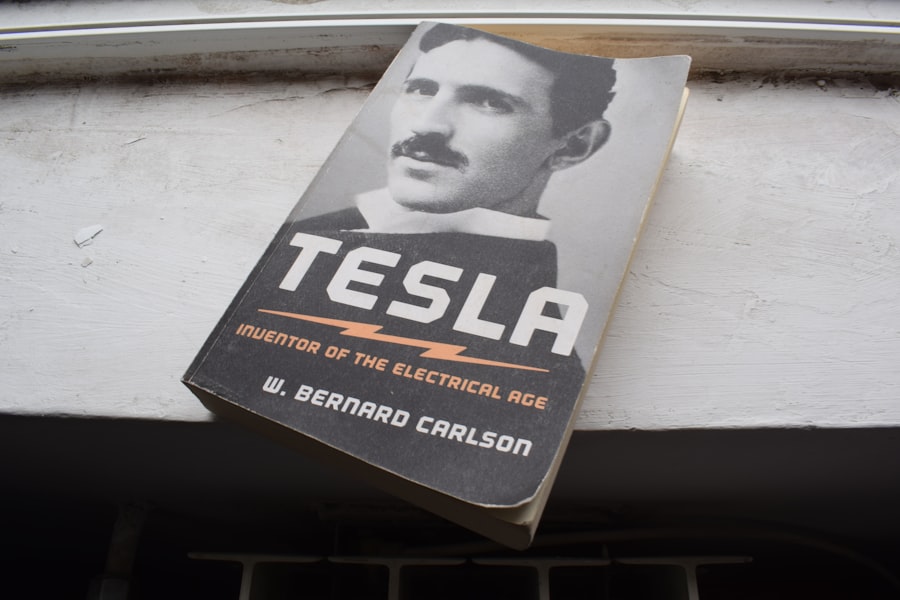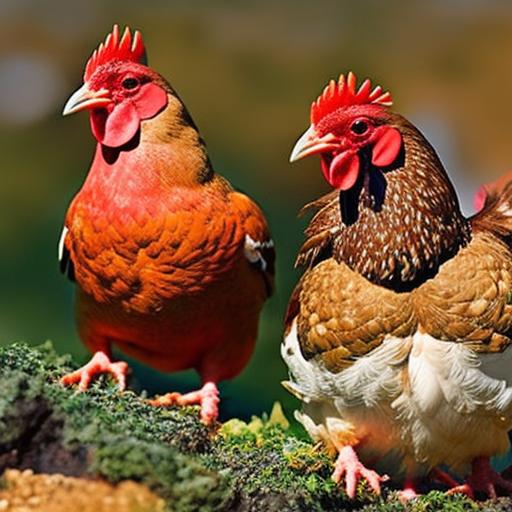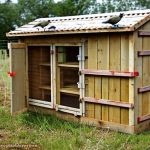As the winter season approaches, it’s important to start thinking about how to keep your chickens warm and cozy. Introducing Cozy Coops, a comprehensive guide that will help you ensure the comfort and well-being of your feathered friends during the colder months. In this post, we will cover everything from choosing the right coop design to feeding and watering your chickens in cold weather.
Key Takeaways
- Cozy Coops are a great way to keep your chickens warm without electricity.
- Warmth is important for chickens to stay healthy and lay eggs during cold weather.
- Choosing the right coop design and insulation materials is crucial for keeping your chickens warm.
- Proper ventilation is necessary to balance airflow and heat retention in your coop.
- Heating alternatives, lighting, feeding, watering, and winter safety are all essential for keeping your chickens cozy and happy during winter.
Understanding the Importance of Warmth for Chickens
Chickens are sensitive to cold temperatures and can suffer from frostbite and other health issues if not kept warm. It is crucial to maintain a comfortable temperature in your coop to ensure the health and well-being of your chickens. Cold temperatures can cause stress, decreased egg production, and even death in extreme cases. By providing a warm and cozy environment for your chickens, you can help them stay healthy and happy throughout the winter season.
Choosing the Right Coop Design for Cold Weather
The design of your coop plays a significant role in how warm it stays during the winter. When choosing a coop design for cold weather, there are several factors to consider. First, insulation is crucial for keeping the heat inside the coop. Insulated walls and roofs can help retain heat and keep your chickens warm. Additionally, consider the size of your coop. A smaller coop will be easier to heat than a larger one.
Ventilation is another important factor to consider when choosing a coop design for cold weather. While insulation is essential, proper airflow is also necessary to prevent moisture buildup and maintain air quality inside the coop. Make sure your coop has adequate ventilation openings that can be adjusted according to the weather conditions.
Insulation: Materials and Techniques for Keeping Your Coop Warm
| Insulation Type | Material | R-Value | Cost |
|---|---|---|---|
| Blanket Insulation | Fiberglass | 3.2-3.8 per inch | |
| Spray Foam Insulation | Polyurethane | 6.0-6.5 per inch | |
| Rigid Foam Insulation | Polystyrene | 3.8-4.4 per inch | |
| Reflective Insulation | Foil-faced | 1.0-1.3 per inch |
Insulation is key to keeping your coop warm during the winter months. There are several insulation options available, each with its own advantages and disadvantages. One popular option is foam board insulation, which is easy to install and provides excellent thermal resistance. Another option is straw bales, which can be stacked around the coop to create a natural insulating barrier. Other materials such as fiberglass insulation and reflective foil insulation can also be used effectively.
In addition to choosing the right insulation material, it’s important to use proper insulation techniques. Make sure to insulate the walls, roof, and floor of your coop. Pay attention to any gaps or cracks where heat can escape and seal them properly. Insulating the windows and doors of your coop is also essential to prevent drafts.
Ventilation: Balancing Airflow and Heat Retention in Your Coop
While insulation is important for keeping your coop warm, it’s equally important to balance airflow and heat retention. Proper ventilation is necessary to remove excess moisture and maintain good air quality inside the coop. Without proper ventilation, condensation can build up, leading to dampness and potential health issues for your chickens.
To achieve the right balance of ventilation and insulation, consider installing adjustable vents or windows that can be opened or closed depending on the weather conditions. This will allow you to control the airflow inside the coop while still maintaining a warm environment for your chickens.
Heating Alternatives: Safe and Effective Ways to Warm Up Your Coop

While electricity may not always be an option for heating your coop, there are several safe and effective alternatives available. One popular option is using heat lamps, which provide a direct source of heat for your chickens. Make sure to use heat lamps specifically designed for poultry and follow all safety guidelines to prevent fire hazards.
Another option is using heated waterers to ensure your chickens have access to fresh water at all times. Heated waterers prevent the water from freezing, which is essential for keeping your chickens hydrated during the winter months.
Lighting: Using Natural and Artificial Light to Keep Your Chickens Cozy
Lighting can also play a role in keeping your chickens warm and comfortable during the winter. Natural light is essential for maintaining the circadian rhythm of your chickens, which affects their overall health and egg production. Make sure your coop has windows or skylights that allow natural light to enter.
In addition to natural light, you can also use artificial light to supplement the daylight hours during the winter season. By providing additional lighting in the morning and evening, you can help your chickens maintain a consistent day-night cycle, which can have a positive impact on their well-being.
Feeding and Watering: Essential Tips for Keeping Your Chickens Healthy and Hydrated in Cold Weather
Feeding and watering your chickens properly is crucial for their health and well-being during the winter. In cold weather, chickens require extra calories to maintain their body temperature. Make sure to provide them with a balanced diet that includes high-quality feed and supplements if necessary.
Water is also essential for your chickens’ health, but it can freeze in cold temperatures. To prevent this, consider using heated waterers or regularly replacing the water with warm water. Make sure to check the waterers frequently to ensure they are functioning properly.
Winter Safety: Preparing Your Coop for Snow, Ice, and Other Hazards
Winter weather can bring hazards such as snow, ice, and freezing temperatures. It’s important to prepare your coop for these hazards to keep your chickens safe and healthy. Clear any snow or ice buildup around the coop to prevent it from collapsing or blocking ventilation openings. Make sure the roof of your coop is sturdy enough to withstand heavy snowfall.
Provide extra bedding inside the coop to insulate the floor and keep your chickens warm. Straw or wood shavings are good options for bedding material. Regularly check for drafts or leaks in the coop and repair them promptly to prevent cold air from entering.
Cozy Coops and Happy Chickens – Enjoying Winter with Your Feathered Friends
With the right preparation and care, you can keep your chickens warm and comfortable during the winter months. Cozy Coops is here to help you create a cozy and welcoming environment for your feathered friends, so you can enjoy the winter season together. By choosing the right coop design, insulating properly, balancing ventilation and heat retention, using safe heating alternatives, providing adequate lighting, and ensuring proper feeding and watering, you can keep your chickens happy and healthy throughout the winter season.
If you’re looking for ways to keep your chickens warm without electricity, you might find this article on “How to Insulate a Chicken Coop” helpful. It provides practical tips and techniques for insulating your coop to ensure your chickens stay cozy and comfortable during the colder months. From using straw bales and bubble wrap to adding extra bedding and sealing drafts, this article offers valuable insights on creating a warm environment for your feathered friends. Check it out here.
FAQs
What are some ways to keep chickens warm without electricity?
There are several ways to keep chickens warm without electricity, including insulating the coop, using deep litter, providing warm bedding, and using heat lamps powered by alternative sources such as solar or propane.
How can I insulate my chicken coop?
You can insulate your chicken coop by using materials such as straw bales, foam board insulation, or reflective insulation. It’s important to ensure proper ventilation to prevent moisture buildup.
What is deep litter?
Deep litter is a method of bedding where layers of organic material such as straw, hay, or wood shavings are added to the coop floor. As the layers build up, they create a natural insulation that helps keep the coop warm.
What kind of bedding should I use to keep my chickens warm?
Bedding materials such as straw, hay, or wood shavings can provide warmth for chickens. It’s important to keep the bedding dry and clean to prevent moisture buildup and the growth of harmful bacteria.
Can I use a heat lamp to keep my chickens warm?
Yes, you can use a heat lamp to keep your chickens warm, but it’s important to use caution and follow safety guidelines. Heat lamps should be placed securely and away from flammable materials, and alternative power sources such as solar or propane can be used to avoid reliance on electricity.
Meet Walter, the feathered-friend fanatic of Florida! Nestled in the sunshine state, Walter struts through life with his feathered companions, clucking his way to happiness. With a coop that’s fancier than a five-star hotel, he’s the Don Juan of the chicken world. When he’s not teaching his hens to do the cha-cha, you’ll find him in a heated debate with his prized rooster, Sir Clucks-a-Lot. Walter’s poultry passion is no yolk; he’s the sunny-side-up guy you never knew you needed in your flock of friends!







